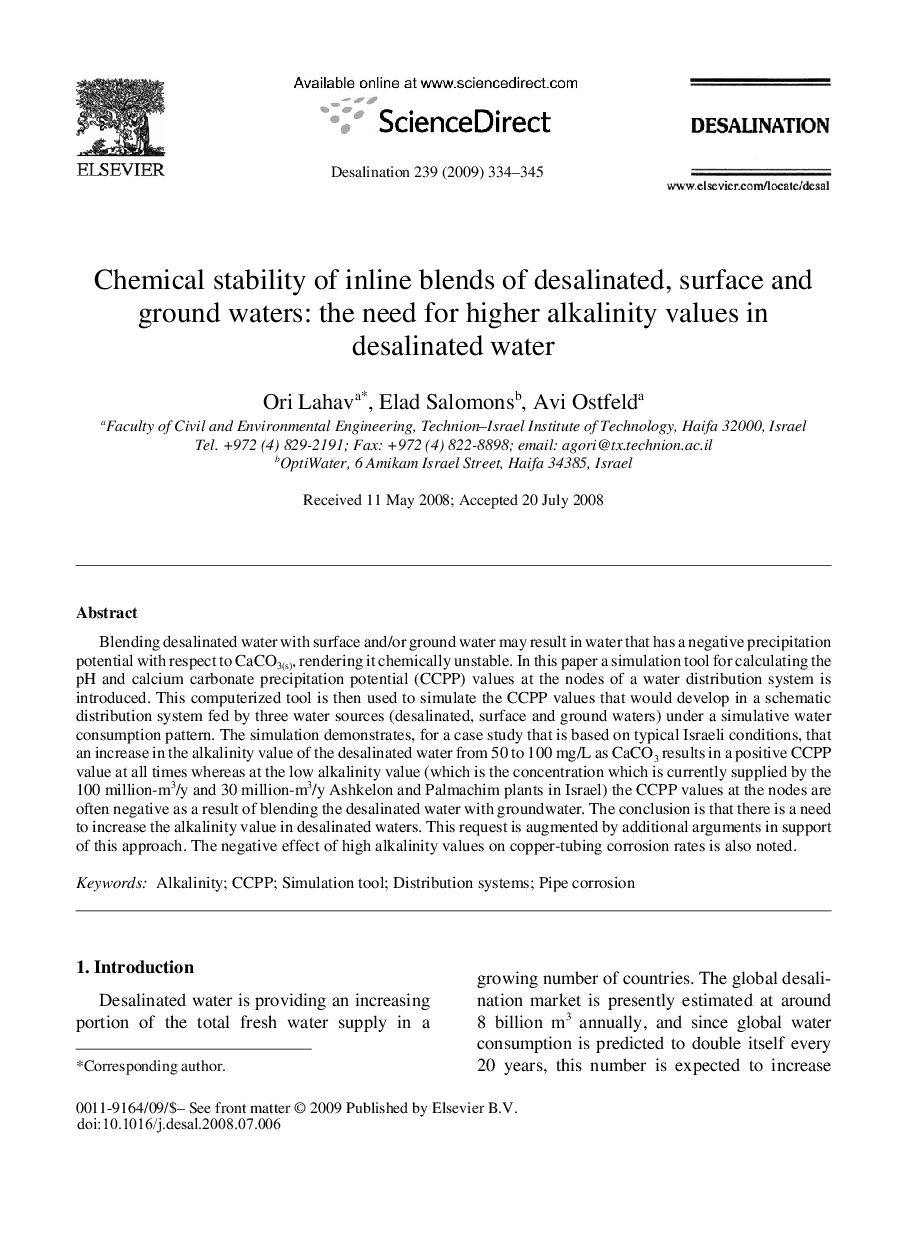| کد مقاله | کد نشریه | سال انتشار | مقاله انگلیسی | نسخه تمام متن |
|---|---|---|---|---|
| 626970 | 1455451 | 2009 | 12 صفحه PDF | دانلود رایگان |

Blending desalinated water with surface and/or ground water may result in water that has a negative precipitation potential with respect to CaCO3(s), rendering it chemically unstable. In this paper a simulation tool for calculating the pH and calcium carbonate precipitation potential (CCPP) values at the nodes of a water distribution system is introduced. This computerized tool is then used to simulate the CCPP values that would develop in a schematic distribution system fed by three water sources (desalinated, surface and ground waters) under a simulative water consumption pattern. The simulation demonstrates, for a case study that is based on typical Israeli conditions, that an increase in the alkalinity value of the desalinated water from 50 to 100 mg/L as CaCO3 results in a positive CCPP value at all times whereas at the low alkalinity value (which is the concentration which is currently supplied by the 100 million-m3/y and 30 million-m3/y Ashkelon and Palmachim plants in Israel) the CCPP values at the nodes are often negative as a result of blending the desalinated water with groundwater. The conclusion is that there is a need to increase the alkalinity value in desalinated waters. This request is augmented by additional arguments in support of this approach. The negative effect of high alkalinity values on copper-tubing corrosion rates is also noted.
Journal: Desalination - Volume 239, Issues 1–3, April 2009, Pages 334-345